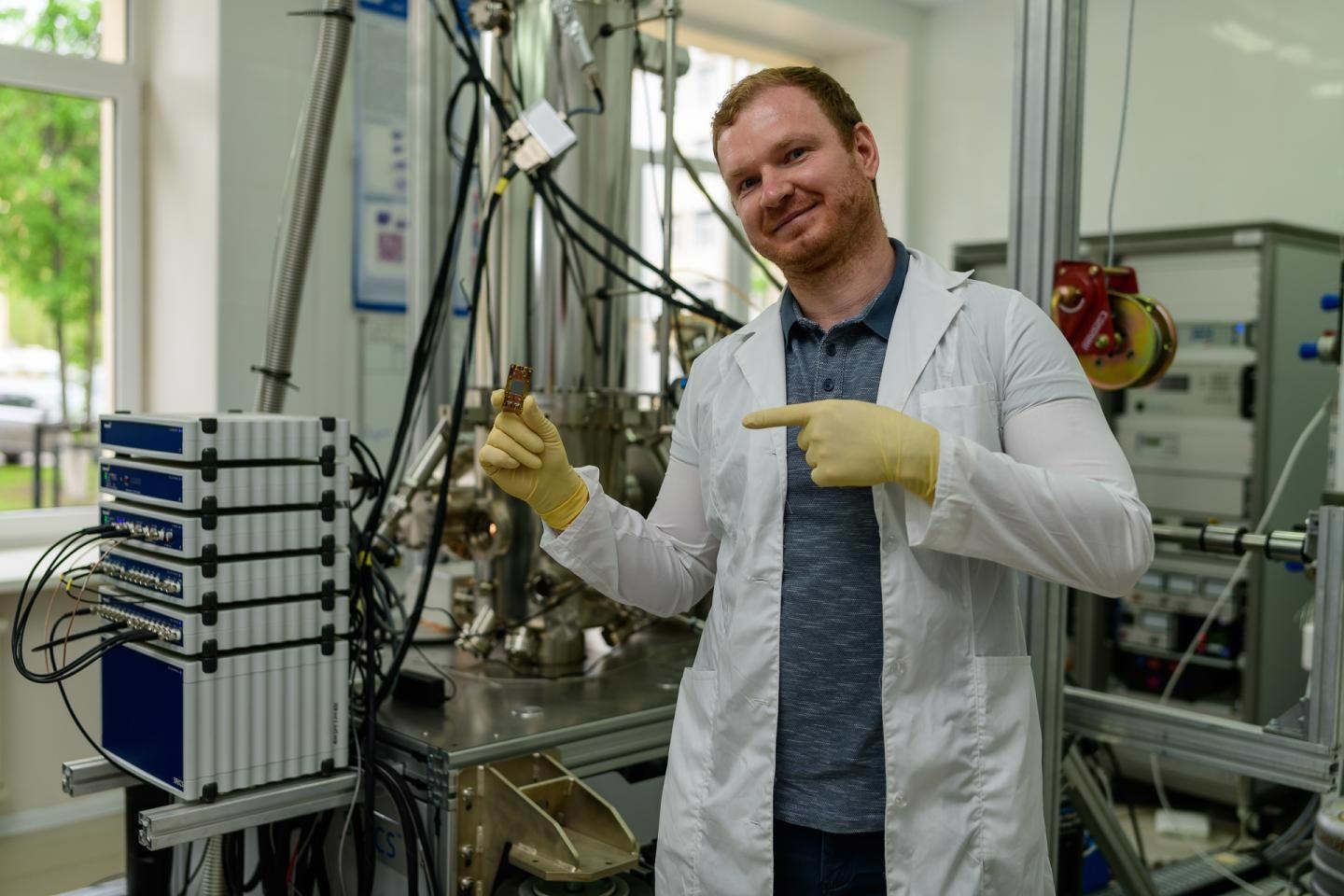Jun 22 2021
A new platform has been designed and tested by researchers from the National University of Science and Technology Misis (NUST MISIS) and MIPT to obtain the ultra-strong photon-to-magnon coupling.
 Igor Golovchanskiy with a chip under investigation in his hands. Image Credit: Andrey Zmeev, MIPT Press Office.
Igor Golovchanskiy with a chip under investigation in his hands. Image Credit: Andrey Zmeev, MIPT Press Office.
The recommended on-chip system is based on thin-film heterostructures that have ferromagnetic, insulating and superconducting layers. This breakthrough solves a major issue that has been on the agenda for researchers from various countries for the last decade, and paves the way for new possibilities in implementing quantum technologies. The study was reported in the leading journal, Science Advances.
The last 10 years have witnessed considerable progress in the advancement of artificial quantum systems. Researchers are investigating various platforms, each with its pros and cons. The next crucial step for developing the quantum industry demands an efficient method of data exchange between platform hybrid systems that could benefit from individual platforms.
For instance, hybrid systems built on magnons, or collective spin excitations, are now being designed. In these systems, magnons should interact with photons, which are standing electromagnetic waves confined in a resonator. However, the fundamentally weak interaction between magnons and photons is the main restricting factor for designing these systems. The systems are of different sizes and obey different laws of dispersion. This size variation of a hundred times or more, significantly makes the interaction difficult.
Researchers from MIPT along with their collaborators were able to develop a system with the so-called ultra-strong photon-to-magnon coupling.
We created two subsystems. In one, being a sandwich from superconductor/insulator/superconductor thin films, photons are slowed down, their phase velocity is reduced. In another one, which is also a sandwich from superconductor/ferromagnetic/superconductor thin films, superconducting proximity at both interfaces enhances the collective spin eigen-frequencies.
Vasily Stolyarov, Deputy Head, MIPT Laboratory of Topological Quantum Phenomena in Superconducting Systems
Stolyarov added, “The ultra-strong photon-to-magnon coupling is achieved thanks to the suppressed photon phase velocity in the electromagnetic subsystem.”
Igor Golovchanskiy, leading researcher, senior researcher at the MIPT Laboratory of Topological Quantum Phenomena in Superconducting Systems, and head of the NUST MISIS Laboratory of Cryogenic Electronic Systems, explained: “Photons interact very weakly with magnons. We managed to create a system in which these two types of excitations interact very strongly. With the help of superconductors, we have significantly reduced the electromagnetic resonator. This resulted in a hundred times reduction of the phase velocity of photons, and their interaction with magnons increased by several times.
Igor Golovchanskiy, Senior Researcher, MIPT Laboratory of Topological Quantum Phenomena in Superconducting Systems
This breakthrough will expedite the adoption of hybrid quantum systems, and will also pave the way for new opportunities in superconducting magnonics and spintronics.
Journal Reference:
Golovchanskiy, I. A., et al. (2021) Ultrastrong photon-to-magnon coupling in multilayered heterostructures involving superconducting coherence via ferromagnetic layers. Science Advances. doi.org/10.1126/sciadv.abe8638.